MARKETING
How the LinkedIn Algorithm Works in 2023 [Updated]
![How the LinkedIn Algorithm Works in 2023 [Updated] How the LinkedIn Algorithm Works in 2023 [Updated]](https://articles.entireweb.com/wp-content/uploads/2023/01/How-the-LinkedIn-Algorithm-Works-in-2023-Updated.png)
LinkedIn bills itself as “the world’s largest professional network” — and they have the numbers to prove it. With over 875 million members in more than 200 countries and regions, LinkedIn is immensely popular and well-used. On top of the sheer size of the platform, nearly 25% of users are senior-level influencers; about 10 million are categorized as C-level executives, and LinkedIn classifies 63 million as “decision makers.”
If you’re a B2B marketer or brand, you probably already know this social media platform offers you an excellent opportunity to reach your target demographic. However, seizing that opportunity is easier said than done since LinkedIn uses a unique algorithm to serve content to users.
In this article, we will walk through how the LinkedIn algorithm works in 2023, best practices for beating the algorithm with organic content, and how brands can elevate their presence on the platform.
What is the LinkedIn Algorithm?
The LinkedIn algorithm is a formula that determines which content gets seen by certain users on the platform. It’s designed to make each user’s newsfeed as relevant and interesting to them as possible to increase engagement and time spent on the platform. In this way, the LinkedIn algorithm is similar to the Facebook or TikTok algorithm, though LinkedIn’s is slightly more transparent (which is good news!).
In fact, LinkedIn itself is a good source for demystifying the algorithm and understanding what content is prioritized for members. But the general function of the LinkedIn algorithm is to review and assess billions of posts every day and position those that are most authentic, substantive and relevant to each user at the top of their feeds.
How the algorithm achieves that function is a little more complex.
How the LinkedIn Algorithm Works in 2023
LinkedIn users’ feeds don’t show posts in chronological order. Instead, the LinkedIn algorithm determines which posts show up at the top of users’ feeds, meaning that sometimes users see older or more popular posts before they see more recent ones.
Several factors influence the LinkedIn algorithm, and the factors change relatively often. Let’s take a closer look.
1. Assess and Filter Content by Quality
When someone posts on LinkedIn, the algorithm determines whether it’s spam, low-quality, or high-quality content. High-quality content is cleared, low-quality content undergoes additional screening, and spam content is eliminated.
- Spam – Content flagged as spam can have poor grammar, contain multiple links within the post, tag more than five people, use more than ten hashtags (or use expressly prescriptive hashtags like #follow, #like, and #comment) or be one of multiple postings from the same user within three hours.
- Low-quality – Content categorized as low quality isn’t spam but is judged as not particularly relevant to the audience. These posts can be hard to read, tag people who are unlikely to respond or interact, or deal with topics too broad to be interesting to users.
- High-quality – “Clear” content is easy to read, encourages engagement, incorporates strong keywords, uses three or fewer hashtags, and reserves outbound links to the comments. In other words, it’s something your audience will want to read or see and react to in a substantive way.
2. Test Post Engagement with a Small Follower Group
Once a post has made it through the spam filter, the algorithm distributes it to a small subset of your followers for a short time (about an hour) to test its ability to generate engagement. If this group of followers likes, comments or shares the post within this “golden hour,” the LinkedIn algorithm will push it to more people.
If, on the other hand, the post is ignored, or your followers choose to hide it from their feeds (or, worst of all, mark it as spam), the algorithm will not share it further.
3. Expand the Audience Based on Ranking Signals
If the algorithm decides your post is worthy of being sent to a broader audience, it will use a series of three ranking signals to determine exactly who sees it: personal connection, interest relevance and engagement probability.
These signals boil down to the level of connection between you and the user who potentially sees the post, that user’s interest in the content’s topic and the likelihood of that user interacting with the content. We’ll break down exactly what these ranking signals are further in the post.
4. Additional Spam Checks and Continued Engagement Monitoring
Even after a post is pushed to a broader audience, the LinkedIn algorithm continues monitoring how users perceive it in terms of quality. If your content is marked as spam or entirely ignored by the new audience group, LinkedIn will stop showing it to those audiences. On the other hand, if your post resonates with new audiences, LinkedIn will keep the post in rotation. So long as the post gets a steady stream of engagement, posts can stay in circulation for months.
8 Best Practices to Make the LinkedIn Algorithm Work for You
Understanding how the LinkedIn algorithm works is the first step to reaching more people on LinkedIn and ensuring your content is well-received and engaging. The next step is optimizing your content based on the factors the algorithm prioritizes to maximize its effect. This is where mastering the ranking signals comes into play.
Here are eight tips for crafting high-performing LinkedIn content:
1. Know What’s Relevant to Your Audience
Relevance is what the algorithm prizes above all other content qualities. For LinkedIn, relevance translates to engagement, which leads to more time spent on the platform, which results in more ad revenue and continued growth. Following this tip will win you points in the “interest relevance” and “engagement probability” ranking categories.
The entire LinkedIn ecosystem is set up to prioritize highly relevant content. To ensure your posts are relevant, create content focused on your niche and your audience’s specific needs and interests. As LinkedIn’s then-Director of Product Management Linda Leung explained in 2022, “we are continuously investing in the teams, tools, and technology to ensure that the content that you see on your feed adds value to your professional journey.”
Use customer research and analytics from other social media platforms to learn more about what your audience wants to know. Focus on creating high-quality, valuable content that helps professionals succeed in formats they prefer (for example, videos, which get three times the average engagement of text-only posts). But above all, posting content that is personal and has industry relevance is vital.
2. Post at the Right Time
As with most things, timing is crucial for successful LinkedIn posts. It’s even more critical when considering the “golden hour” testing process integral to the algorithm’s rankings. Remember, how much interaction a post gets within the first hour after it’s published determines whether it gets pushed to a broader audience. That means posting at the optimal time when your followers are online and primed to respond is a central factor to success.
You are the best judge of when your top LinkedIn followers and people in your network are most likely to be on the platform and engaging with content. But for the general public, data suggests the best time to post is at 9:00 a.m. EST on Tuesdays and Wednesdays. Cross-reference these times with your own analytics and knowledge about your audience — like a common time zone, for example — to find the best time for your posts.
3. Encourage Engagement
Your post format can play a significant role in user engagement. The LinkedIn algorithm doesn’t explicitly prioritize videos over photo and text posts, but LinkedIn’s internal research has found video ads are five times more likely to start conversations compared to other types of promoted content.
Asking a question is another great way to encourage interaction with your post. If you’re sharing industry insights, open the conversation to commenters by asking them to share their opinions or experiences on the topic.
Additionally, tagging someone in your LinkedIn post can expand its reach, but only tag relevant users and people likely to engage with the post. You don’t automatically get in front of a celebrity’s entire following just because you tagged them. In fact, the algorithm’s spam filter can penalize your post for that. But when you tag someone relevant, the tagged person’s connections and followers will also see your post in their feeds.
4. … But don’t beg users to engage
The LinkedIn algorithm penalizes posts and hashtags that expressly ask for an engagement action like a follow or a comment. In an official blog post from May 2022, LinkedIn said that it “won’t be promoting” posts that “ask or encourage the community to engage with content via likes or reactions posted with the exclusive intent of boosting reach on the platform.” Essentially, content that begs for engagement is now considered low-quality and should be avoided.
5. Promote new posts on non-LinkedIn channels
LinkedIn doesn’t exist in a vacuum, and neither do its users. Content that gains traction in other channels can help boost LinkedIn posts and vice versa. Sharing posts on your website, other social media platforms, or with coworkers can spark the initial engagement required for a viral LinkedIn post. Promoting content on other channels can also encourage inactive LinkedIn users to re-engage with the platform, and that interaction will be interpreted as net new engagement for your post.
6. Keep Your Posts Professional
As the “professional social networking site,” LinkedIn has a well-honed identity that extends to the type of content it favors. Specifically, business-related content that users will find relevant and helpful to their careers or within their industry.
This might seem common sense, but it can be tempting to think that content that earns lots of clicks or likes on other social media platforms will perform similarly when cross-posted on LinkedIn. Unfortunately (or fortunately), hilarious memes, TikTok dance clips and personal videos don’t resonate with the LinkedIn algorithm.
7. Avoid Outbound Links
The urge to include an outbound link in a LinkedIn post is real, especially for B2B marketers using LinkedIn to generate leads and traffic to their websites. But this is universally regarded as a tactic to avoid. LinkedIn wants to keep users on the platform and engaging; link-outs defeat that purpose. Therefore, the algorithm tends to downgrade content that includes an outbound link.
Posts without outbound links enjoyed six times more reach than posts containing links. Does that mean there’s no room for a link to your brand’s website or blog with additional resources? No. But the best practice is creating content that encourages a conversation and letting the audience request an outbound link. If you feel compelled to link to something off-platform, include that link in the comments.
8. Keep an Eye on SSI
LinkedIn has a proprietary metric called the Social Selling Index, which measures “how effective you are at establishing your professional brand, finding the right people, engaging with insights, and building relationships.” Per LinkedIn, social selling leaders create 45% more opportunities than those users with lower SSI scores.
A higher SSI boosts users’ posts closer to the top of their audience’s feeds. While this impacts post visibility for individual posters rather than brands and companies, it remains a significant influence on LinkedIn’s algorithm and is worth noting.
Source: Business 2 Community
An Overview of Ranking Signals on LinkedIn’s Algorithm
As mentioned earlier, there are three ranking signals the LinkedIn algorithm uses to rank posts in a user’s feed:
- Personal connections
- Interest relevance
- Engagement probability
And here’s how each signal impacts a post’s ranking:
Personal Connections
In 2019, LinkedIn began deprioritizing content from mega influencers (think Oprah and Richard Brandon) and instead began highlighting content from users’ personal connections. To determine a user’s connections, LinkedIn considers these two things:
- Who a user works with or has previously worked with
- Who a user has interacted with before on the platform
At the top of the feed, users now see posts by people they engage with often and by anyone who posts consistently. Users also see more posts from connections with whom they share interests and skills (according to their LinkedIn profiles).
That said, as of 2022, LinkedIn is also “creating more ways to follow people throughout the feed experience,” including thought leaders, industry experts, and creators that may be outside of a user’s network. So it’s important to remember that personal connection is just one factor influencing post ranking.
Interest relevance
Relevance is another of the three ranking signals – and in many ways, the most important one. LinkedIn explains on its engineering blog: “We already have a strong set of explicit and implicit signals that provide context on what content a member may find interesting based on their social connections and the Knowledge Graph (e.g., a company that they follow, or news widely shared within their company).”
LinkedIn also uses what they call an “interest graph” that represents the relationships between users and a variety of topics. This lets the LinkedIn algorithm measure the following:
- How interested users are in certain topics
- How related are different topics to one another
- Which connections share a user’s interests
The algorithm also considers the companies, people, hashtags, and topics mentioned in a post to predict interest. To maximize the interest relevance ranking, you have to understand your target audience and craft content that they’ll find relevant.
Engagement Probability
Interaction plays a significant role in a post’s ranking on LinkedIn. The platform uses machine learning to rank interaction in two ways:
- How likely a user is to comment on, share, or react to a post based on the content and people they have interacted with
- How quickly a post starts receiving engagement after it’s published. The faster users interact with a post, the more likely it will appear at the top of others’ feeds
Users who regularly interact with others’ posts in their LinkedIn feed are more likely to see interactions on their content, which in turn means that they’ll be more likely to show up on other people’s feeds.
Elevate Your Brand’s LinkedIn Presence
The LinkedIn algorithm can seem intimidating, but it really isn’t. It relies on a series of rules and ranking measures that can be understood and mastered to present users with content they find helpful in their professional lives.
Knowing that the algorithm prioritizes engagement, relevance and connection will help get your posts in front of more LinkedIn users and improve your overall performance on the platform. And by following the eight best practices outlined in this article, you’ll be able to keep your audience’s interest and create plenty of opportunities for them to engage with your content.
Tinuiti helps brands strengthen relationships with new and current customers through expert social media strategy and brilliant creative. Reach out to our Paid Social services team to learn how to start advancing your LinkedIn strategy today.
Editor’s Note: This post was originally published in September 2021 and has been regularly updated for freshness, accuracy, and comprehensiveness.
MARKETING
18 Events and Conferences for Black Entrepreneurs in 2024
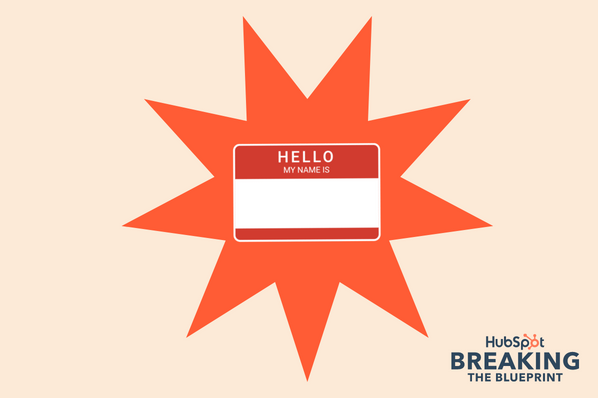
Welcome to Breaking the Blueprint — a blog series that dives into the unique business challenges and opportunities of underrepresented business owners and entrepreneurs. Learn how they’ve grown or scaled their businesses, explored entrepreneurial ventures within their companies, or created side hustles, and how their stories can inspire and inform your own success.
It can feel isolating if you’re the only one in the room who looks like you.
MARKETING
IAB Podcast Upfront highlights rebounding audiences and increased innovation
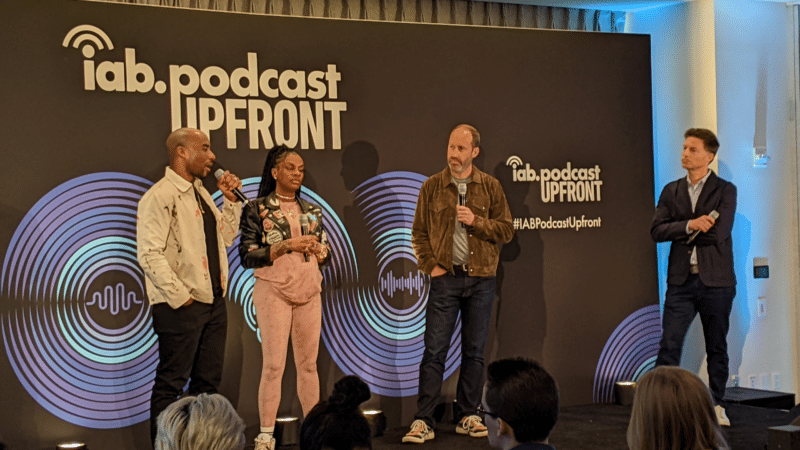
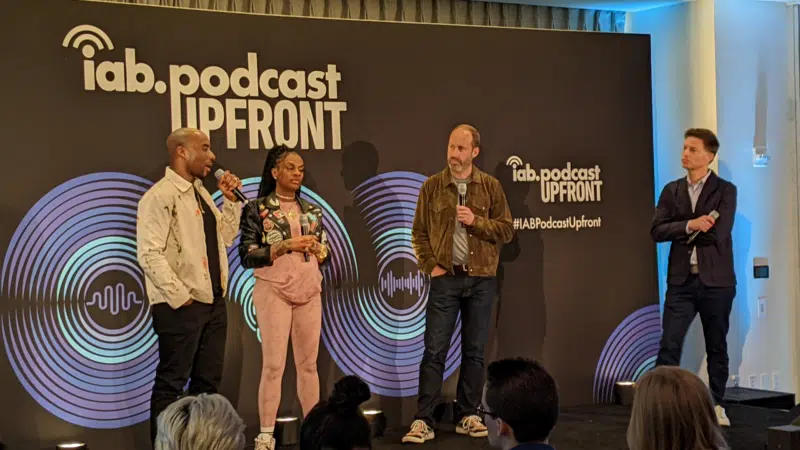
Podcasts are bouncing back from last year’s slowdown with digital audio publishers, tech partners and brands innovating to build deep relationships with listeners.
At the IAB Podcast Upfront in New York this week, hit shows and successful brand placements were lauded. In addition to the excitement generated by stars like Jon Stewart and Charlamagne tha God, the numbers gauging the industry also showed promise.
U.S. podcast revenue is expected to grow 12% to reach $2 billion — up from 5% growth last year — according to a new IAB/PwC study. Podcasts are projected to reach $2.6 billion by 2026.
The growth is fueled by engaging content and the ability to measure its impact. Adtech is stepping in to measure, prove return on spend and manage brand safety in gripping, sometimes contentious, environments.
“As audio continues to evolve and gain traction, you can expect to hear new innovations around data, measurement, attribution and, crucially, about the ability to assess podcasting’s contribution to KPIs in comparison to other channels in the media mix,” said IAB CEO David Cohen, in his opening remarks.
Comedy and sports leading the way
Podcasting’s slowed growth in 2023 was indicative of lower ad budgets overall as advertisers braced for economic headwinds, according to Matt Shapo, director, Media Center for IAB, in his keynote. The drought is largely over. Data from media analytics firm Guideline found podcast gross media spend up 21.7% in Q1 2024 over Q1 2023. Monthly U.S. podcast listeners now number 135 million, averaging 8.3 podcast episodes per week, according to Edison Research.
Comedy overtook sports and news to become the top podcast category, according to the new IAB report, “U.S. Podcast Advertising Revenue Study: 2023 Revenue & 2024-2026 Growth Projects.” Comedy podcasts gained nearly 300 new advertisers in Q4 2023.
Sports defended second place among popular genres in the report. Announcements from the stage largely followed these preferences.
Jon Stewart, who recently returned to “The Daily Show” to host Mondays, announced a new podcast, “The Weekly Show with Jon Stewart,” via video message at the Upfront. The podcast will start next month and is part of Paramount Audio’s roster, which has a strong sports lineup thanks to its association with CBS Sports.
Reaching underserved groups and tastes
IHeartMedia toasted its partnership with radio and TV host Charlamagne tha God. Charlamagne’s The Black Effect is the largest podcast network in the U.S. for and by black creators. Comedian Jess Hilarious spoke about becoming the newest co-host of the long-running “The Breakfast Club” earlier this year, and doing it while pregnant.
The company also announced a new partnership with Hello Sunshine, a media company founded by Oscar-winner Reese Witherspoon. One resulting podcast, “The Bright Side,” is hosted by journalists Danielle Robay and Simone Boyce. The inspiration for the show was to tell positive stories as a counterweight to negativity in the culture.
With such a large population listening to podcasts, advertisers can now benefit from reaching specific groups catered to by fine-tuned creators and topics. As the top U.S. audio network, iHeartMedia touted its reach of 276 million broadcast listeners.
Connecting advertisers with the right audience
Through its acquisition of technology, including audio adtech company Triton Digital in 2021, as well as data partnerships, iHeartMedia claims a targetable audience of 34 million podcast listeners through its podcast network, and a broader audio audience of 226 million for advertisers, using first- and third-party data.
“A more diverse audience is tuning in, creating more opportunities for more genres to reach consumers — from true crime to business to history to science and culture, there is content for everyone,” Cohen said.
The IAB study found that the top individual advertiser categories in 2023 were Arts, Entertainment and Media (14%), Financial Services (13%), CPG (12%) and Retail (11%). The largest segment of advertisers was Other (27%), which means many podcast advertisers have distinct products and services and are looking to connect with similarly personalized content.
Acast, the top global podcast network, founded in Stockholm a decade ago, boasts 125,000 shows and 400 million monthly listeners. The company acquired podcast database Podchaser in 2022 to gain insights on 4.5 million podcasts (at the time) with over 1.7 billion data points.
Measurement and brand safety
Technology is catching up to the sheer volume of content in the digital audio space. Measurement company Adelaide developed its standard unit of attention, the AU, to predict how effective ad placements will be in an “apples to apples” way across channels. This method is used by The Coca-Cola Company, NBA and AB InBev, among other big advertisers.
In a study with National Public Media, which includes NPR radio and popular podcasts like the “Tiny Desk” concert series, Adelaide found that NPR, on average, scored 10% higher than Adelaide’s Podcast AU Benchmarks, correlating to full-funnel outcomes. NPR listeners weren’t just clicking through to advertisers’ sites, they were considering making a purchase.
Advertisers can also get deep insights on ad effectiveness through Wondery’s premium podcasts — the company was acquired by Amazon in 2020. Ads on its podcasts can now be managed through the Amazon DSP, and measurement of purchases resulting from ads will soon be available.
The podcast landscape is growing rapidly, and advertisers are understandably concerned about involving their brands with potentially controversial content. AI company Seekr develops large language models (LLMs) to analyze online content, including the context around what’s being said on a podcast. It offers a civility rating that determines if a podcast mentioning “shootings,” for instance, is speaking responsibly and civilly about the topic. In doing so, Seekr adds a layer of confidence for advertisers who would otherwise pass over an opportunity to reach an engaged audience on a topic that means a lot to them. Seekr recently partnered with ad agency Oxford Road to bring more confidence to clients.
“When we move beyond the top 100 podcasts, it becomes infinitely more challenging for these long tails of podcasts to be discovered and monetized,” said Pat LaCroix, EVP, strategic partnerships at Seekr. “Media has a trust problem. We’re living in a time of content fragmentation, political polarization and misinformation. This is all leading to a complex and challenging environment for brands to navigate, especially in a channel where brand safety tools have been in the infancy stage.”
Dig deeper: 10 top marketing podcasts for 2024
MARKETING
Foundations of Agency Success: Simplifying Operations for Growth


Why do we read books like Traction, Scaling Up, and the E-Myth and still struggle with implementing systems, defining processes, and training people in our agency?
Those are incredibly comprehensive methodologies. And yet digital agencies still suffer from feast or famine months, inconsistent results and timelines on projects, quality control, revisions, and much more. It’s not because they aren’t excellent at what they do. I
t’s not because there isn’t value in their service. It’s often because they haven’t defined the three most important elements of delivery: the how, the when, and the why.
Complicating our operations early on can lead to a ton of failure in implementing them. Business owners overcomplicate their own processes, hesitate to write things down, and then there’s a ton of operational drag in the company.
Couple that with split attention and paper-thin resources and you have yourself an agency that spends most of its time putting out fires, reacting to problems with clients, and generally building a culture of “the Founder/Creative Director/Leader will fix it” mentality.
Before we chat through how truly simple this can all be, let’s first go back to the beginning.
When we start our companies, we’re told to hustle. And hustle hard. We’re coached that it takes a ton of effort to create momentum, close deals, hire people, and manage projects. And that is all true. There is a ton of work that goes into getting a business up and running.


The challenge is that we all adopt this habit of burning the candle at both ends and the middle all for the sake of growing the business. And we bring that habit into the next stage of growth when our business needs… you guessed it… exactly the opposite.
In Mike Michalowitz’s book, Profit First he opens by insisting the reader understand and accept a fundamental truth: our business is a cash-eating monster. The truth is, our business is also a time-eating monster. And it’s only when we realize that as long as we keep feeding it our time and our resources, it’ll gobble everything up leaving you with nothing in your pocket and a ton of confusion around why you can’t grow.
Truth is, financial problems are easy compared to operational problems. Money is everywhere. You can go get a loan or go create more revenue by providing value easily. What’s harder is taking that money and creating systems that produce profitably. Next level is taking that money, creating profit and time freedom.
In my bestselling book, The Sabbatical Method, I teach owners how to fundamentally peel back the time they spend in their company, doing everything, and how it can save owners a lot of money, time, and headaches by professionalizing their operations.
The tough part about being a digital agency owner is that you likely started your business because you were great at something. Building websites, creating Search Engine Optimization strategies, or running paid media campaigns. And then you ended up running a company. Those are two very different things.


How to Get Out of Your Own Way and Create Some Simple Structure for Your Agency…
- Start Working Less
I know this sounds really brash and counterintuitive, but I’ve seen it work wonders for clients and colleagues alike. I often say you can’t see the label from inside the bottle and I’ve found no truer statement when it comes to things like planning, vision, direction, and operations creation.
Owners who stay in the weeds of their business while trying to build the structure are like hunters in the jungle hacking through the brush with a machete, getting nowhere with really sore arms. Instead, define your work day, create those boundaries of involvement, stop working weekends, nights and jumping over people’s heads to solve problems.
It’ll help you get another vantage point on your company and your team can build some autonomy in the meantime.
- Master the Art of Knowledge Transfer
There are two ways to impart knowledge on others: apprenticeship and writing something down. Apprenticeship began as a lifelong relationship and often knowledge was only retained by ONE person who would carry on your method.
Writing things down used to be limited (before the printing press) to whoever held the pages.
We’re fortunate that today, we have many ways of imparting knowledge to our team. And creating this habit early on can save a business from being dependent on any one person who has a bunch of “how” and “when” up in their noggin.
While you’re taking some time to get out of the day-to-day, start writing things down and recording your screen (use a tool like loom.com) while you’re answering questions.


Deposit those teachings into a company knowledge base, a central location for company resources. Some of the most scaleable and sellable companies I’ve ever worked with had this habit down pat.
- Define Your Processes
Lean in. No fancy tool or software is going to save your company. Every team I’ve ever worked with who came to me with a half-built project management tool suffered immensely from not first defining their process. This isn’t easy to do, but it can be simple.
The thing that hangs up most teams to dry is simply making decisions. If you can decide how you do something, when you do it and why it’s happening that way, you’ve already won. I know exactly what you’re thinking: our process changes all the time, per client, per engagement, etc. That’s fine.
Small businesses should be finding better, more efficient ways to do things all the time. Developing your processes and creating a maintenance effort to keep them accurate and updated is going to be a liferaft in choppy seas. You’ll be able to cling to it when the agency gets busy.
“I’m so busy, how can I possibly work less and make time for this?”


You can’t afford not to do this work. Burning the candle at both ends and the middle will catch up eventually and in some form or another. Whether it’s burnout, clients churning out of the company, a team member leaving, some huge, unexpected tax bill.
I’ve heard all the stories and they all suck. It’s easier than ever to start a business and it’s harder than ever to keep one. This work might not be sexy, but it gives us the freedom we craved when we began our companies.
Start small and simple and watch your company become more predictable and your team more efficient.
-

 PPC6 days ago
PPC6 days agoHow the TikTok Algorithm Works in 2024 (+9 Ways to Go Viral)
-

 SEO5 days ago
SEO5 days agoHow to Use Keywords for SEO: The Complete Beginner’s Guide
-

 SEO7 days ago
SEO7 days agoBlog Post Checklist: Check All Prior to Hitting “Publish”
-

 MARKETING6 days ago
MARKETING6 days agoHow To Protect Your People and Brand
-

 SEARCHENGINES7 days ago
SEARCHENGINES7 days agoGoogle Started Enforcing The Site Reputation Abuse Policy
-

 PPC7 days ago
PPC7 days agoHow to Craft Compelling Google Ads for eCommerce
-

 MARKETING7 days ago
MARKETING7 days agoElevating Women in SEO for a More Inclusive Industry
-

 PPC7 days ago
PPC7 days agoHow to Brainstorm Business Ideas: 9 Fool-Proof Approaches










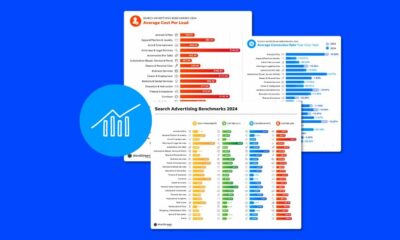

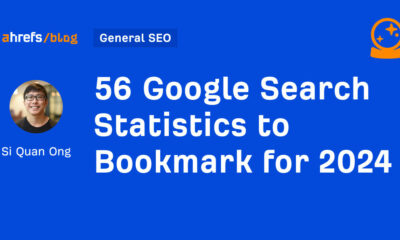




You must be logged in to post a comment Login